
MSI Radeon RX 570 Gaming X 4G Review
Manufacturer: MSIUK price (as reviewed): £193.99 (inc VAT)
US price (as reviewed): $189.99 (ex tax)
A couple of days ago, AMD introduced the RX 500 series to market with the RX 580 and RX 570, which are effectively higher clocked and more power hungry refreshes of the RX 480 and RX 470 respectively at similar price points, as outlined in our launch day RX 580 review. The launch has of course been seized upon by all of AMD's regular board partners to push their latest graphics card designs on consumers seeking an upgrade. One such partner is MSI, which has supplied our first RX 570 for review. The MSI RX 570 Gaming X 4G retails for £194, which is £30 more than the cheapest cards around at the moment. In return, customers get a card with small bumps to core and memory clock speeds and MSI's Twin Frozr VI cooler.
The Gaming X design is likely familiar to anyone who's been keeping up with GPU launches in the last few years, and it's one that's proven popular. It's a dual-slot card (just under, in fact) that comes with a distinctive red and black shroud. Unlike the SKUs MSI has for the RX 580, none of its RX 570 cards have a backplate, even though this card is MSI's flagship RX 570. This is potentially an issue given that the card weighs almost 800g, and we'd certainly prefer it to have one than not, but we didn't notice any bending during testing.
The out-of-box core boost frequency is 1,281MHz, which is a modest three percent bump over the reference speed of 1,244MHz. The memory, meanwhile, is left at 7Gbps, although it can be pushed to 7.1Gbps by setting the card to its built-in OC Mode in the MSI Gaming App (available on desktop and mobile), which also sees the core hit 1,293MHz – four percent over stock. These frequencies are middle of the road, with Asus, Powercolor, and Sapphire all offering RX 570 SKUs with higher boost clock speeds. A Silent Mode can also be set, which essentially just knocks things back to reference clocks.
Deviation from the reference display outputs is common, and MSI opts to replace one DisplayPort with a second HDMI, leaving you with two of each – arguably a better balance, particularly for anyone interested in a budget VR setup. A dual-link DVI-D connection rounds out the rear I/O area for legacy panels.
The card is powered by a single 8-pin PCI-E connector, making 225W available in total. The RX 570 is a 150W part, so this is plenty even if you want to dabble in manual overclocking. There's no indent on the PCB to make way for protruding power cables, but as the cooler itself is considerably taller than the PCB this shouldn't be a problem, assuming your case can house the card as it is.
RGB LEDs light up the MSI logo along the top as well as a series of strips on the shroud's front fascia. This is still a little bit at odds with the red and black design, and we wonder if MSI will soon move to a more neutral colour scheme that seems to be becoming the norm. The lighting is easily controlled (or disabled) through the aforementioned Gaming App software.
The Twin Frozr VI heatsink uses a large, nickel-plated copper baseplate to remove heat from the GPU, feeding it to the array of aluminium fins via two S-shaped, nickel-plated copper heat pipes (one 8mm, one 6mm), which are squared at the point of contact with the baseplate for added heat transfer. The heatsink also has a series of deflectors designs to direct airflow more accurately at the heat pipes, and MSI uses what it calls Premium Thermal Compound X for bonding the baseplate to the GPU. Prying the cooler off reveals a smaller heatsink that directly cools the GPU MOSFETs, but the VRAM chips are left without direct cooling.
Two large MSI Torx 2.0 fans are used to cool the heatsink. They use an alternating blade design, with one blade shaped to accelerate airflow and the other to push it more directly down towards the fins. As you'd expect now, the fans switch off completely when the GPU is cool enough i.e. when it's idle or only under low load.
A look at the PCB reveals a 6+2 phase power design, with MSI using its Military Class 4 components in place of “standard” ones – as ever, these come with numerous claimed benefits related to electrical performance, efficiency, and overclocking potential.
Specifications
- Graphics processor AMD Radeon RX 570, 1,281MHz (1,293MHz in OC Mode)
- Pipeline 2,048 stream processors, 128 texture units, 32 ROPs
- Memory 4GB GDDR5, 7Gbps effective (7.1Gbps in OC Mode)
- Bandwidth 224GB/sec (227.2GB/sec in OC Mode), 256-bit interface
- Compatibility DirectX 12, Vulcan, OpenGL 4.5
- Outputs/Inputs 2 x DisplayPort 1.4, Dual Link DVI-D, 2 x HDMI 2.0b
- Power connections 1 x 8-pin PCI-E, top-mounted
- Size 276mm long, 142mm tall, dual-slot
- Warranty Three years

MSI MPG Velox 100R Chassis Review
October 14 2021 | 15:04

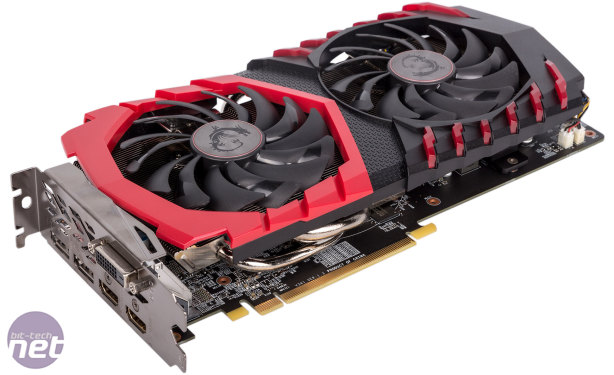
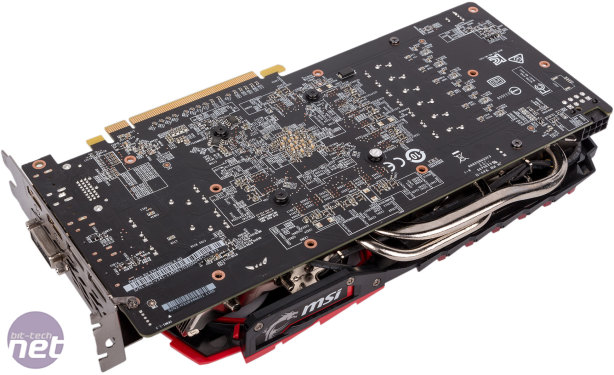
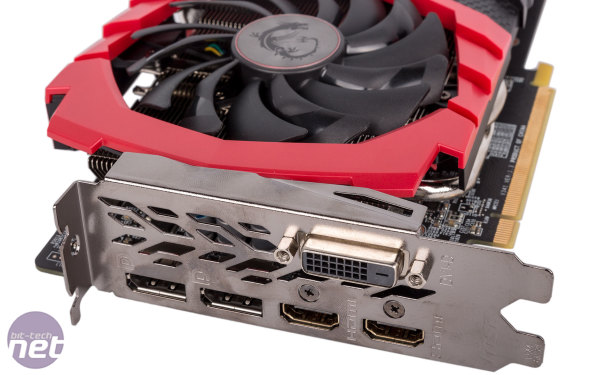
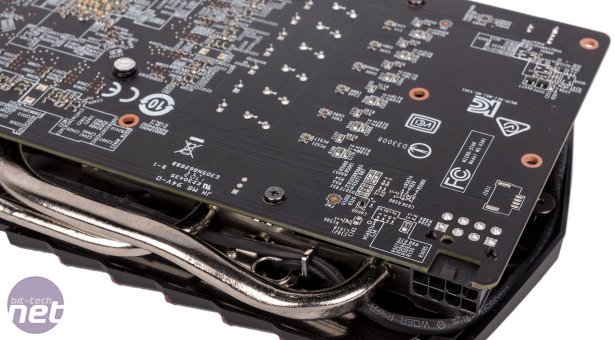
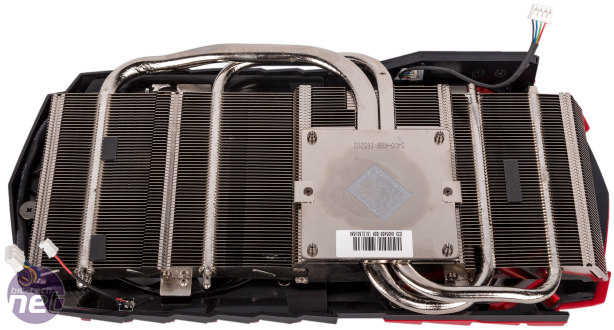








Want to comment? Please log in.